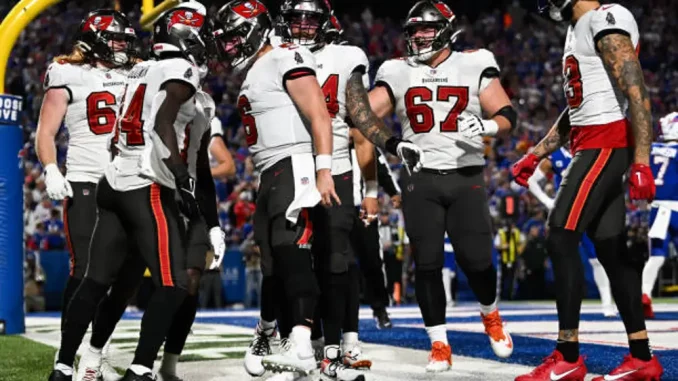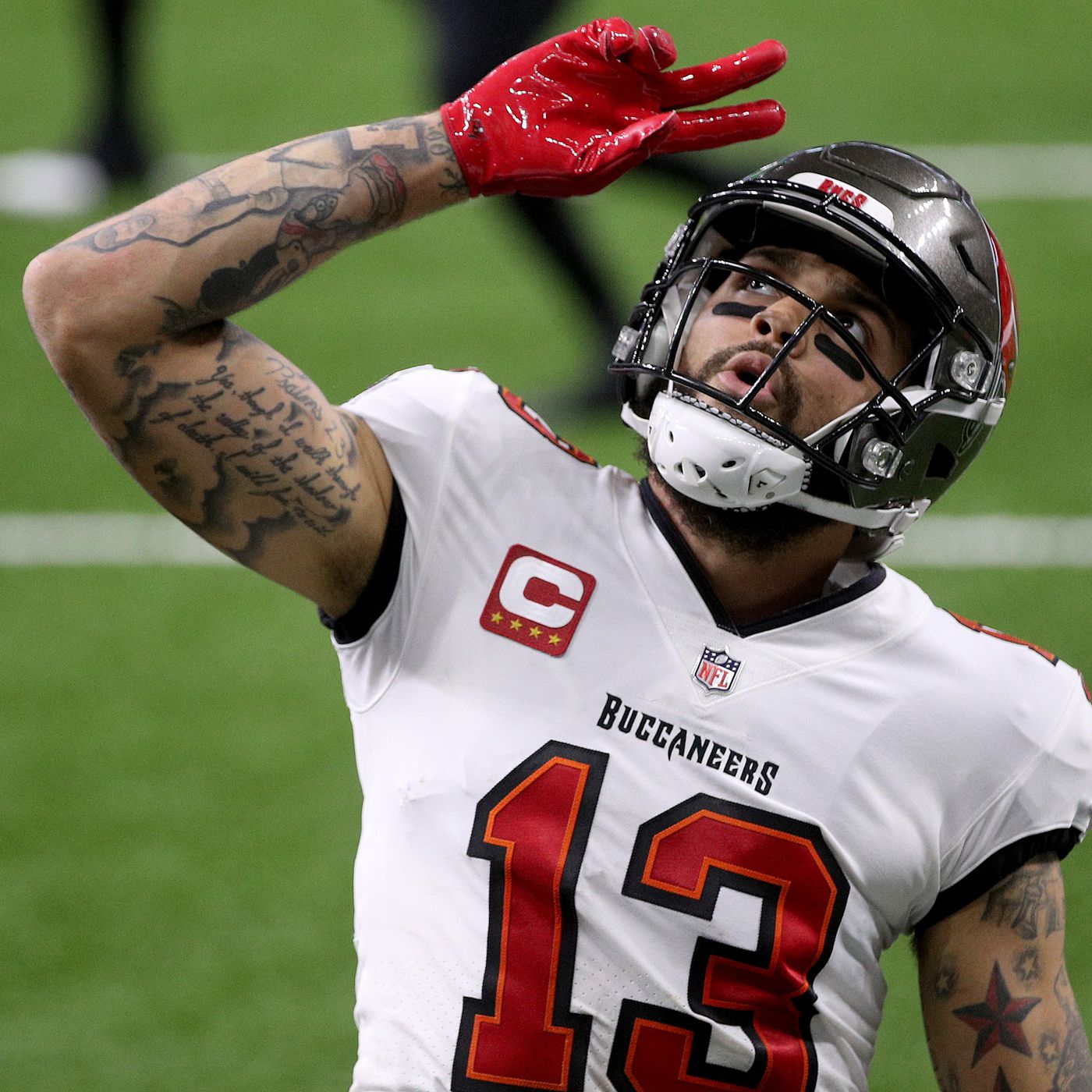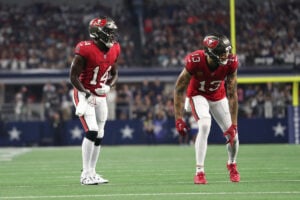
How The Bucs Got Mike Evans More Involved

I need to get a few things out of the way before I dig into the thesis of this article on the Bucs’ usage of Mike Evans. First, despite popular opinion, the Bucs are throwing to Evans at a fairly regular rate already. Through Week 9 he had been targeted 57 times in eight games. That works out to 121 targets over a full season.
Only once in the last five years has Evans received (pun intended) more targets. That was 2022 … when fans were clamoring that he wasn’t targeted enough. There wasn’t this outcry in 2021 when he received 121 targets, and the Bucs won the division. Nor were fans up in arms in 2020 when he only received 108 targets en route to a Super Bowl.
Next, force-feeding Evans the ball does not automatically solve everything. From 2015 to 2018 when Evans averaged 145 targets per season the Bucs were … not good. Force feeding Evans was actually a big problem for former Bucs quarterback Jameis Winston, as it led to a fair share of his exorbitant interception totals. Their two highest point total games this year have come in games where Evans was targeted three (New Orleans) and four (Houston) times. As it turns out, getting Mike the ball and scoring points aren’t that highly correlated.
With all of that said and narratives aside, Bucs offensive coordinator Dave Canales got Mike Evans more involved in the offense week ten against the Titans. And in some really fun ways.
Getting Mike Evans and Chris Godwin On The Same Side

Bucs WRs Chris Godwin and Mike Evans – Photo by: Cliff Welch/PR
In most offenses Mike Evans is going to fill the role of a traditional “X” receiver. This will ask him to often be isolated to a single side of the field (the boundary) while the rest of the receiving options are on the opposite side (the concept).
In this role Evans is often asked to run deep routes that stretch the field and the defense and allow others to work more intermediate and underneath routes. This can often leave him out of the read progression entirely on plays.
If the quarterback looks over to his side pre-snap and sees a safety shading Evans’ way, he will make the decision to work completely to the concept side of the field. At that point Evans becomes a decoy tasked with occupying two defenders and reducing the coverage on the rest of the play.
If the quarterback looks over to his side pre-snap and sees a safety shading Evans’ way, he will make the decision to work completely to the concept side of the field. At that point Evans becomes a decoy tasked with occupying two defenders and reducing the coverage on the rest of the play.
But against the Titans, Dave Canales used more 2×2 and 3×2 looks with Evans paired with Chris Godwin. There were even some 3×1 looks that had him lined up to the concept side with tight end Cade Otton working the boundary. Getting his two best receiving options to the same side of the field, working together, and stressing the defense was something I had been hoping Canales would do, and he delivered.
In this example Evans was able to help Godwin get over by using his field-stretching powers to hold the safety long enough to allow Godwin to come into an open window underneath on the dig route
Using Him From The Slot
Mike Evans’ slot reps weren’t drastically higher in this game than for the season as a whole. Against the Titans he lined up in the slot 32% of the time (10 snaps). His season average is 29%. But the Bucs were able to find him in the slot more.
Getting Evans into the slot comes with pros and cons. The pros are that it either a) matches him up against a usually lesser defender like a slot corner, safety or linebacker, or b) forces the defense to declare they are in man coverage by having an outside corner follow him into the slot. Either of those things can often be a boon for the Bucs.
The tradeoff is that it does limit the route tree the Bucs can utilize out of that position. Evans isn’t going to be working bubble screens or logging a ton of whip routes as they really aren’t in his wheelhouse. This allows the opposing defenders to isolate possible options a bit better.
Using Mike Evans to Open Up Opportunities For Others
By getting his best receiver more involved on the concept side, the Bucs can open up advantageous matchups and route combinations for other receivers. One example is in this 3×1 look the Bucs threw out that almost hit big. The threat of Chris Godwin and Mike Evans staying to the concept side holds the deep safety who wants to protect against them vertically. This allowed Trey Palmer to use his speed and leverage to get open for a would-be big gain on the vertical across the field.
But getting Evans to the field side isn’t just to help other receivers. It can also help him get more favorable looks as well.
Dave Canales Is Getting Creative
The bottom line is that throughout the season you see Dave Canales continually adapting his offense to better suit his players. In the case of Mike Evans, he is trying to find a way to get him more involved in new ways that traditionally we haven’t seen with him. One example I appreciated was this switch route that screened his defender and got him loose on a critical third down in the third quarter that would eventually lead to a Bucs touchdown that would effectively seal the game.

Leave a Reply